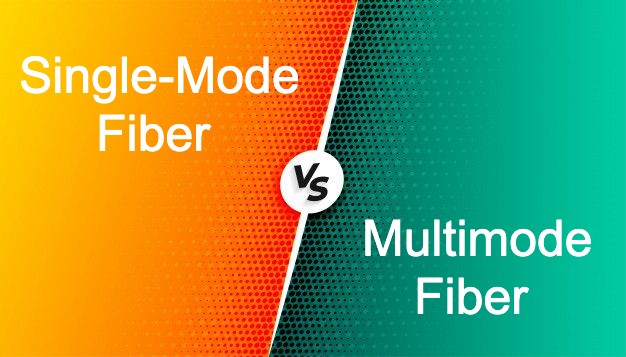Optic fiber cables are widely used in television, telephone, and Internet networks as they are designed to transfer signals within two points. Optical fibers work thanks to the light reflected inside a bent glass rod. A current market offers a wide array of optical cables which suit every need. For instance, they come in single-mode and multimode, depending on the mode of light spreading. Many businesses still get confused about which wire is better to choose, so we’ll discuss the main differences between single mode fiber vs. multimode below.
A single mode fiber cable at the glance
A single mode fiber is an optic fiber cable designed to hold the light only down the wire in the transverse mode. These fibers are widespread for implementation in long-distance data transmission. Regardless of the data rates, single-mode cables can cover the transmission distance for as long as 5 km and even longer.
What is a multi mode fiber?
A multimode fiber wire is commonly used in short-distance data transmission, such as within a single building. The maximum distance that multimode optical cables can cover is 2 km. Graded index and step index are two main types of these optic cables. They are also made in several different grades that differ by bandwidth capabilities and distance limits – OM1, OM2, OM3, OM4, and OM5.
Fiber optic single mode vs. multimode
1. Core diameter
The main difference between multimode vs. single mode fiber is their construction, particularly the diameter of a core. Multi mode fibers feature a larger core size that ranges between 50 and 62.5 µm, while a cladding diameter is typically 125 µm. In contrast, an average single mode fiber cable has a core diameter between 8 and 10 µm with the same cladding diameter. By the way, a larger core in a cable means multiple rays of light, or modes, can travel down the fiber at one time.
2. Bandwidth capabilities
Considering the core sizes in both optical cables, multi mode fibers typically can support multiple propagation modes. However, it doesn’t mean that multi mode fibers stand for higher bandwidth properties. Vice versa, single mode optic wires tend to offer better bandwidth due to the fewer modal dispersion.
3. The color of the jacket
Multi mode optical cables also differ from single mode ones in jacket color. According to the TIA-598C, single mode optical fibers should come with the yellow color of the jacket unless it is a military application. On the other hand, aqua or orange is advisable for multi mode optic cables (depending on their kind). Occasionally, violet marks OM4 fibers that stand for higher performance rates.
4. Cost
As multi mode optical cables can carry multiple light modes, they typically cost more than single mode ones. However, the final price for single mode fibers will be higher due to the necessary equipment. More optical cables require solid-state laser diodes for the operation, which adds significant funds to the final bill.

